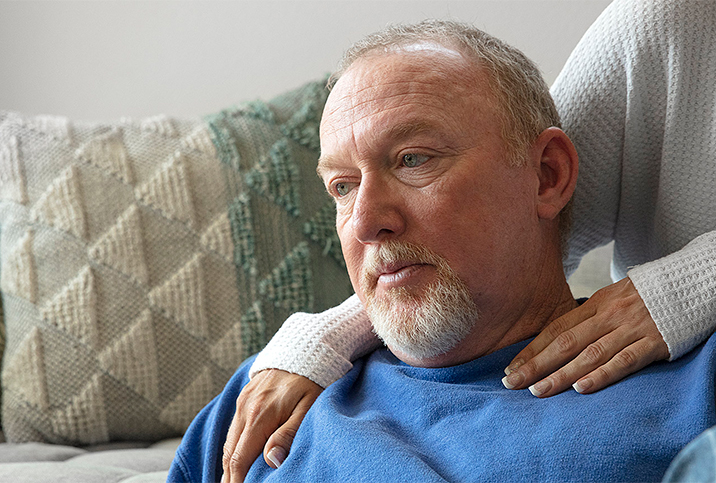How Can You Raise Testosterone Levels Post-Orchiectomy?

Diminished testosterone levels in men can be caused by a number of things, from a testicle injury to simply getting older. Similarly, hypogonadism, a condition in which a male's body fails to produce enough testosterone, can have a number of health implications.
Low testosterone (low-T) can affect anything from fertility to potentially serious health problems, such as osteoporosis, a loss of muscle mass and even cardiovascular disease.
Hypogonadism is common among men who have undergone an orchiectomy, a surgery to remove one or both testicles. Psychologically, the loss of a testicle can be a devastating blow to a man's machismo, which can result in depression and a keenly felt loss of identity. Physiologically, however, the remaining testicle may be able to produce sufficient testosterone to preserve fertility and avert a host of those health consequences.
For orchiectomy patients who aren't quite so fortunate, several treatment options can restore their health and vitality.
Low T-levels? Try testosterone replacement therapy
Testosterone replacement therapy (TRT) is a common form of treatment for patients who have symptoms of low-T after an orchiectomy. Treatment for testosterone loss is not just about low testosterone production; it is a bit more complex. The challenge for doctors comes in dealing with a parallel chronic condition, such as prostate cancer, and certain symptoms that can cause serious health conditions of their own.
The side effects of low testosterone levels, whether post-orchiectomy, from a health condition or injury, are numerous. Patients undergoing long-term TRT, especially older men, are at higher risk for cardiovascular problems. Some specialists worry that replacement therapy can stimulate the growth of prostate cancer cells, although an updated systematic review released in 2022 suggested that TRT can be safely administered to some men who have had prostate cancer.
Other complications include blood clots, liver disease and, in some cases, a worsening of sleep apnea.
After an orchiectomy, how is testosterone administered?
Testosterone can be introduced into a patient's system in several ways, including periodic injection, which is usually placed into thickly muscled areas, such as a thigh or buttock. Nebido, which has proved effective at restoring sexual desire, is injected every 10 to 14 weeks and supplies the patient with a steady level of testosterone.
Other testosterone boosters, such as Viromone and Sustanon, are given every two to three weeks.
Testosterone can also be administered topically via gels, creams or patches, which are popular options for patients and favored by many physicians. However, there is a possibility of skin irritation, including redness, burning and itching.
Topicals can also be inconvenient and impractical. For example, it's necessary to wait for a gel or cream to dry before putting on clothes. Capsules may be the most convenient option, though they deliver lower levels of testosterone than other methods.
Are there other medical options to restore low testosterone levels?
Other drug treatment options to improve your levels of testosterone include aromatase inhibitors such as letrozole, estrogen receptor modulators such as clomiphene citrate, or chorionic gonadotropin, a hormone produced by the placenta during pregnancy.
Certain minerals (zinc and vitamin D), foods (beans, nuts and caffeinated coffee) and healthy lifestyle habits can also help boost testosterone levels.
Get to the sperm bank
Some fertility experts recommend sperm banking as a wise precaution in the event low-T becomes a postsurgical obstacle to fertility. Some patients are left azoospermic, meaning no sperm is present in their ejaculate. After a simple orchiectomy, sperm production can resume naturally (known as spermatogenesis), though this can take years and sperm quality may be uncertain, which is another good reason to bank sperm, especially if having children is a priority.
Restoring testosterone levels isn't a broad proposition, though some treatments have gained widespread popularity and have a history of success, but each case is different. Testosterone replacement therapy for low-T may be too risky for a man battling prostate cancer, while the use of an estrogen receptor modulator, such as clomiphene citrate, may prove a perfectly safe and effective alternative.
Calling your doctor, a urologist or a fertility specialist who will help you come up with the right answer to resolve or improve your testosterone issues after an orchiectomy is often a wise choice.
Don't have a doctor you see regularly? You should find one. Fortunately, telehealth makes it easy to connect with a healthcare professional. Many physicians offer same-day video visits. Giddy Telehealth is an easy-to-use online portal that provides access to hundreds of healthcare professionals whose expertise covers the full scope of medical care, including men's health.


















